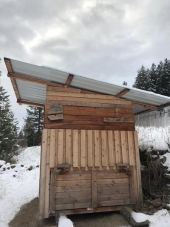




My online educational sites:
https://www.pinterest.ca/joelbc/homestead-methods-tools-equipment/
https://www.pinterest.ca/joelbc/mixed-shops/

 1
1




List of Bryant RedHawk's Epic Soil Series Threads We love visitors, that's why we live in a secluded cabin deep in the woods. "Buzzard's Roost (Asnikiye Heca) Farm." Promoting permaculture to save our planet.










My online educational sites:
https://www.pinterest.ca/joelbc/homestead-methods-tools-equipment/
https://www.pinterest.ca/joelbc/mixed-shops/




horseradish, which I have heard smells like sadness and death to potato predators, and garlic, because, well, garlic, as well as some French marigolds.










Nicole Alderman wrote:I haven't had to deal with fusarium yet (it's my first year growing potatoes). But, it's a fungus, yes? Would interplanting something with antifungal properties help? In another thread (https://permies.com/t/70572/Permie-potato-beds#590668) Chris Knott mentioned interplanting
horseradish, which I have heard smells like sadness and death to potato predators, and garlic, because, well, garlic, as well as some French marigolds.
Horseradish and garlic both have antifungal properties, yes? Maybe they would help? Though, I might be little worried about the horseradish taking over--I hear the stuff likes to take over and is hard to eradicate...
My online educational sites:
https://www.pinterest.ca/joelbc/homestead-methods-tools-equipment/
https://www.pinterest.ca/joelbc/mixed-shops/
 2
2




“The most important decision we make is whether we believe we live in a friendly or hostile universe.”― Albert Einstein












 2
2




List of Bryant RedHawk's Epic Soil Series Threads We love visitors, that's why we live in a secluded cabin deep in the woods. "Buzzard's Roost (Asnikiye Heca) Farm." Promoting permaculture to save our planet.

|
Please do not shame this tiny ad.
2024 Permaculture Adventure Bundle
https://permies.com/w/bundle
|






